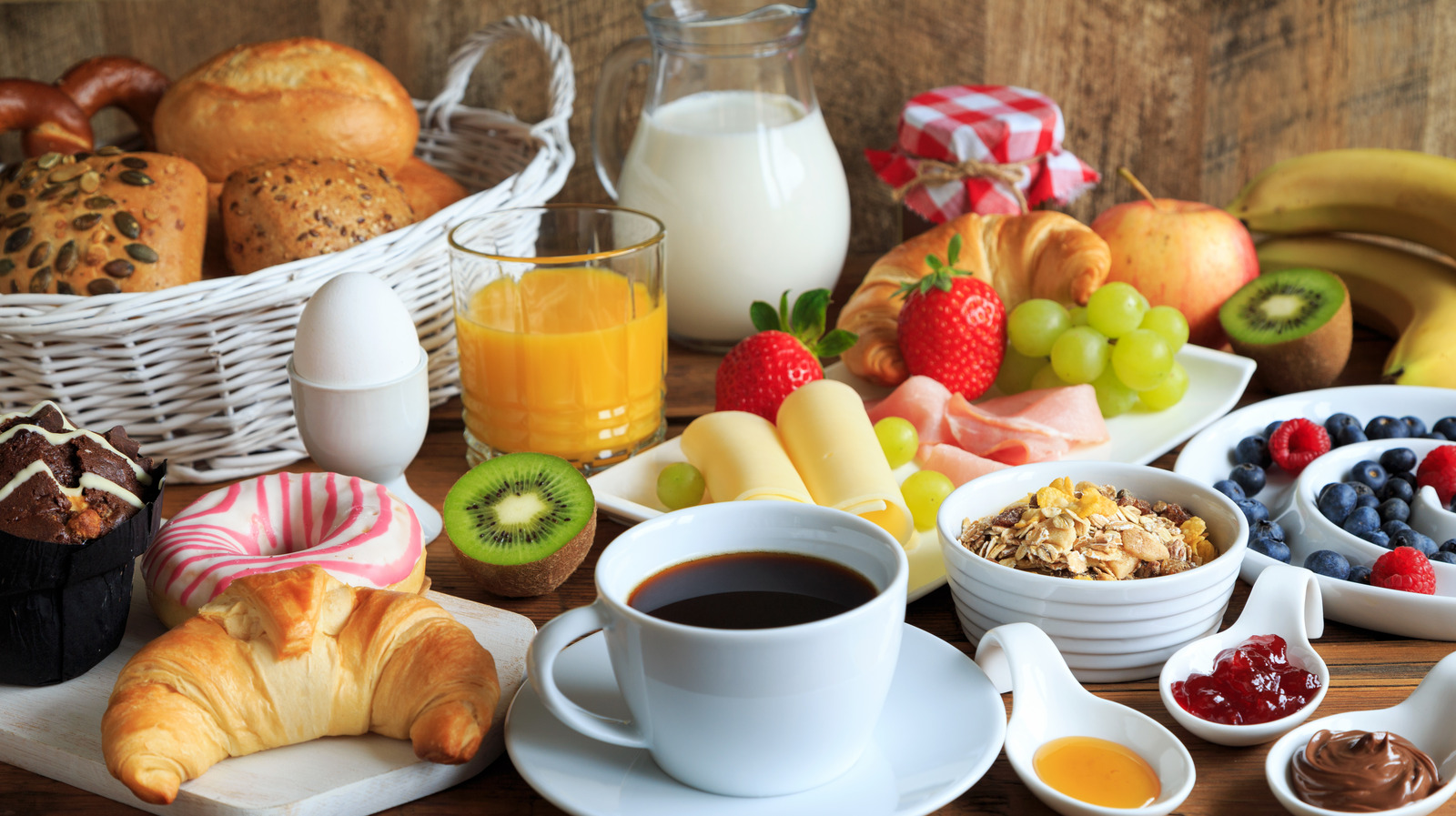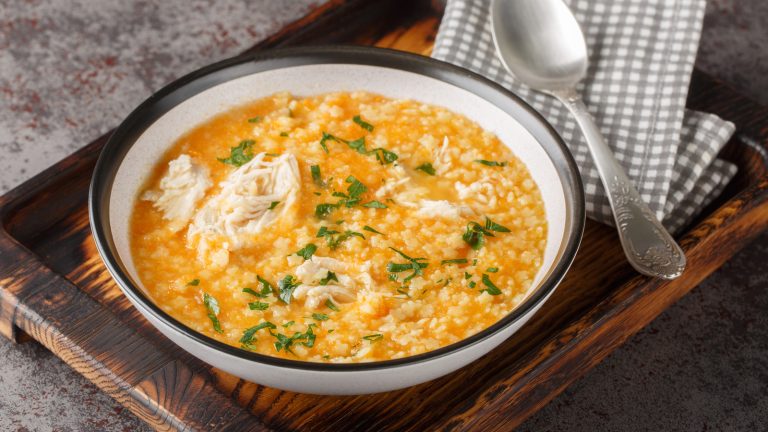Breakfast, as they say, is the most important meal of the day — and the experts seem to agree. Multiple studies have concluded that eating breakfast helps you remain alert and energized throughout the day. Though our ancestors were unaware of these specific benefits, they likely knew that nourishing their bodies early in the day helped them feel better overall. Plus, breakfast foods are among the most delicious — especially when you’re talking full English and traditional American options.
Though citizens of both countries eat a wide array of foods for breakfast (avocado toast, anyone?), there are a handful of specific dishes that come to mind when the meal is mentioned in either locale. In England, most people picture what’s called a “full English,” which is a hearty, surprisingly balanced meal comprised of several different breakfast-y proteins, toast, mushrooms, tomatoes, and baked beans. Those in the United States typically swap the beans for potatoes and forgo the mushrooms and tomatoes, but other traditional American fare wouldn’t look out of place in either country.
While both hearty breakfasts share a few foods and originated to fuel working class men for their labor, there are plenty of differences between them. For instance, the full English breakfast features a selection of foods that have remained practically the same for centuries, while a similar American-style breakfast can be easily customized to the individual. This is due to the fact that the U.S. version offers a wider array of variations on things like eggs and sides, while a full English breakfast describes a specific meal.
What is a full English breakfast?
A full English breakfast follows a very specific formula designed to provide laborers with plenty of energy. It usually starts with two fried eggs accompanied by a few strips of rendered bacon, several sausage links, buttered toast, and — the pièce de résistance — a generous scoop of lightly sweet baked beans in a rich, tomatoey sauce. Though it may be hard to imagine eating baked beans for breakfast if you’re not used to it, they provide a shockingly delicious contrast to the saltier elements of the meal, along with an extra hit of protein and fiber.
As mentioned, the full English also features some fresher elements to balance the salt and protein, typically sautéed mushrooms and tomatoes. The mushrooms may be sliced or roasted whole, but they’re always cooked, while the tomatoes are either sliced and served fresh with a little salt and pepper or given a quick char before they make it to the plate. How you serve them when recreating this dish depends largely on personal preference.
Though it’s perfectly acceptable to enjoy plain buttered toast with this meal, you are also encouraged to jazz it up with a little marmalade if you like a sweet treat with your “brekkie,” as some Brits call it. Americans eager to experience a full English meal at home should also note that the seasoning for this dish is fairly simple. Salt and pepper are generally all you need, though you can add a little pinch of garlic if you must.
What is a classic American breakfast?
Unlike a full English breakfast, the elements of a classic American morning meal can be difficult to pin down because it encompasses such a wide array of dishes and flavors. Some swear fluffy buttermilk pancakes are the only correct answer here. Others insist a plate of buttery steak and eggs is the best way to fuel yourself for the day. In the Appalachian region, tender biscuits and sausage gravy rule the roost as the breakfast of champions, especially once the cold weather sets in.
However, most Americans are also familiar with the combination of bacon, sausage, toast, and eggs — though U.S. diner menus usually offer either sausage or bacon, not both. The idea in the States seems to be centered around creating a balanced plate with lots of variation, allowing those dining to customize their plate as much as they like. For instance, you can get your eggs fried, scrambled, or basted, just to name a few. If bacon and sausage aren’t your thing, steak is an option in some areas, as is scrapple — a salty and savory pork pate popular throughout Pennsylvania. Or, if you’re in Hawaii, spam is a popular protein.
You can also feel free to swap out your toast for a side that better suits your tastes, like pancakes or waffles. Oatmeal is also a good option that’s gradually overtaken by buttery cornmeal grits as you get deeper into the Southern states. Potatoes are also a must with a hearty American breakfast, and you can get them cubed, shredded, sliced, or fried into golden hashbrown patties.
Diverse American experience versus English tradition
At first glance, a classic American breakfast might look pretty similar to a full English breakfast. However, the dishes do vary quite a bit when you look closer in terms of the ingredients used on either side of the pond. For example, you’d be hard-pressed to find baked beans at an American establishment unless it is intentionally serving international cuisine. And if you were craving a side of potatoes served blended with savory fried onions and green bell peppers with your breakfast while exploring the U.K., you might have trouble finding them alongside a full English.
Another big difference between these two classic meals is the bacon. In the U.S., bacon means fairly thin-cut strips of crispy smoked meat striped with lusciously rendered fat. In the U.K., however, bacon is thick, chewy, and salty without a hint of smoke. This difference in texture is due to the fact that American bacon comes from the pork belly alone, while the British cut it from the belly and loin.
Something else worth noting is the cultural impact of these two meals. American breakfasts are so variable because they draw from the melting pot of cultures present across the nation, while the full English breakfast reflects the country’s colonial history. If you’ve noted that a full English breakfast closely resembles an Irish fry-up, it’s because the meal made its way there during English occupation — the same goes for the traditional Australian breakfast.
Where these morning meals overlap
Americans and the English alike would likely be pleased to enjoy most of the foods found in either breakfast. Both feature eggs, bacon, sausage, buttered toast, and a fresh element. Though U.S. restaurants often swap mushrooms and tomatoes for fresh fruit or a smattering of onions and bell peppers, each option offers a pleasant respite from the richness of the rest of the meal.
Both types of breakfast also usually include a hot, caffeinated beverage of some kind. In the U.S., this generally means a steaming cup of coffee, while tea is the more likely choice in England (and throughout the U.K.). However, it’s not necessarily uncommon for Americans to opt for tea or for English citizens to indulge in a good ol’ cup of joe now and then. Juice is also a common accompaniment, particularly orange or apple, though other options might be available based on the type of restaurant and what the local culture is like.
Possibly the biggest similarity between a full English breakfast and classic American morning fare is their shared enduring longevity. Though the American breakfast is more varied, both meals feature foods that have stood the test of time, having nourished citizens of both countries for centuries. No matter what your personal habits may be, both cultures offer the makings of a hearty and satisfying morning meal. These traditions ensure you have delicious options for breaking your fast, regardless of the side of the Atlantic on which you reside.





